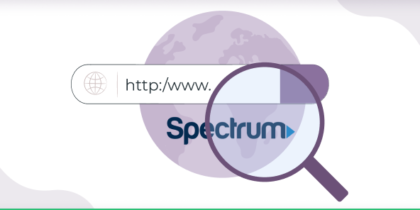Light Fidelity, better known as Li-Fi, the next-generation network technology transmits the internet through light rays. Imagine a world where every light could connect you to the internet such as the lights in our homes, offices, cars, and even streetlights connecting you to high-speed wireless internet.
Visualize this for a second, data flowing out of your living room light fixture like water from a showerhead. Yup, that technology is real, and it is called Li-Fi. Pretty cool, right?
What is Li-Fi?
Li-Fi is high speed two-way fully networked wireless communication, which gives lights another purpose, connectivity. It enables users to send and receive data at blazing-fast internet speeds through the light.
As each year goes by, the world consumes more and more data, approximately 60% more wireless data. Almost all of this is consumed indoors (70% of wireless data consumption happens indoors, of which 80% consumption is streaming). Reference – Statista
The space for conventional radio frequencies is becoming oversaturated, resulting in what is known as the Spectrum Crunch – the possible lack of enough wireless frequency spectrum needed to assist the thriving number of consumer devices. Eventually, radiofrequency technology like Wi-Fi will no longer keep up with demand.
However, Li-Fi does not use radio frequencies as it uses the light spectrum, which can open up one thousand times more spectrum than radio. It would be an integral part of the future of wireless networks such as 5G. Li-Fi a world with unprecedented data and bandwidth.
How Does Li-Fi Work?
Ever thought of light-emitting data? Well, that’s about to become a reality soon. Li-Fi is simple but powerful. We all know how a light bulb works. When an electrical current is applied to a LED light bulb, a constant stream of light is emitted from the bulb which we see an illumination.
Since LED bulbs are electronic devices, the current and the light can be configured for extremely high speeds. The transmission of light/data can be detected by a detector which will convert is back to electrical current, therefore carrying data.
It does not replace your Internet Service Provider (ISP), you’ll still need them to get the internet to your home or office via wires. However, once you have that high-speed connection, you can deploy your fast and secure Li-Fi network using power over Ethernet or power line communications.
Li-Fi offers higher density than many other radio frequency solutions. For example, if you have an average Wi-Fi router in your office that provides up to 100Mbps and 15 people are connected to that router, it means that you might be able to access only 4Mbps.
On the other hand, with a Li-Fi network of lights that offer 42Mbps per light, even if you had only eight lights in your room, the same 15 people could share more than 300Mbps. That’s dense and fast wireless communication.
Li-Fi Features:
- Two-way
- Fully duplex
- Hi-Speed
With Li-Fi, data is transmitted and received at the same time, resulting in a really fast reliable user experience, especially when doing things like Skype calls, video streaming, and virtual reality.
Moreover, Li-Fi is fully networked, which means all the lights in your Li-Fi network can speak to each other without interrupting your internet session. Each light even has its IP address, which means that you can offer location tracking and geofencing within your network.
Li-Fi vs. Wi-Fi
Although internet users might think that Li-Fi, with its insane speed of 224Gbps, is capable of leaving out Wi-Fi for good, it’s important to understand the Li-Fi requires light to be on at all times.
Since Wi-Fi uses radio frequency, signals can easily pass through walls and buildings. With the case of Li-Fi, signals are unable to pass through walls as you’re dealing with light. For you to be able to enjoy connectivity fully, LED bulbs will need to be strategically positioned throughout the coverage area.
Besides, Li-Fi requires the light bulb remains switched on at all times to provide internet connectivity, which means that your home, office or any other coverage area’s lights will need to remain switched on at all times you’re using the internet, especially in the day.
Moreover, places with lack of light bulbs will significantly be affected, especially public places. This means Li-Fi might not be able to provide adequate internet on Public Wi-Fi networks.
Is Li-Fi Secure?
It does promise to enhance your online security. By using Li-Fi instead of Wi-Fi, you’ll let go of several security-related issues which are commonly associated with shared and swamped broadband networks.
Li-Fi will also be beneficial in areas where you experience low radiofrequency waves such as densely populated areas. With a technology that doesn’t rely on radio frequency waves, Li-Fi will be advantageous in providing you uninterrupted internet connectivity.
Due to Li-Fi’s remarkable internet speeds, it could make a significant impact in the field of Internet of Things (IoT). As IoT devices demand data to be transferred at higher speeds, it will prove to be just the technology smart devices need to.



